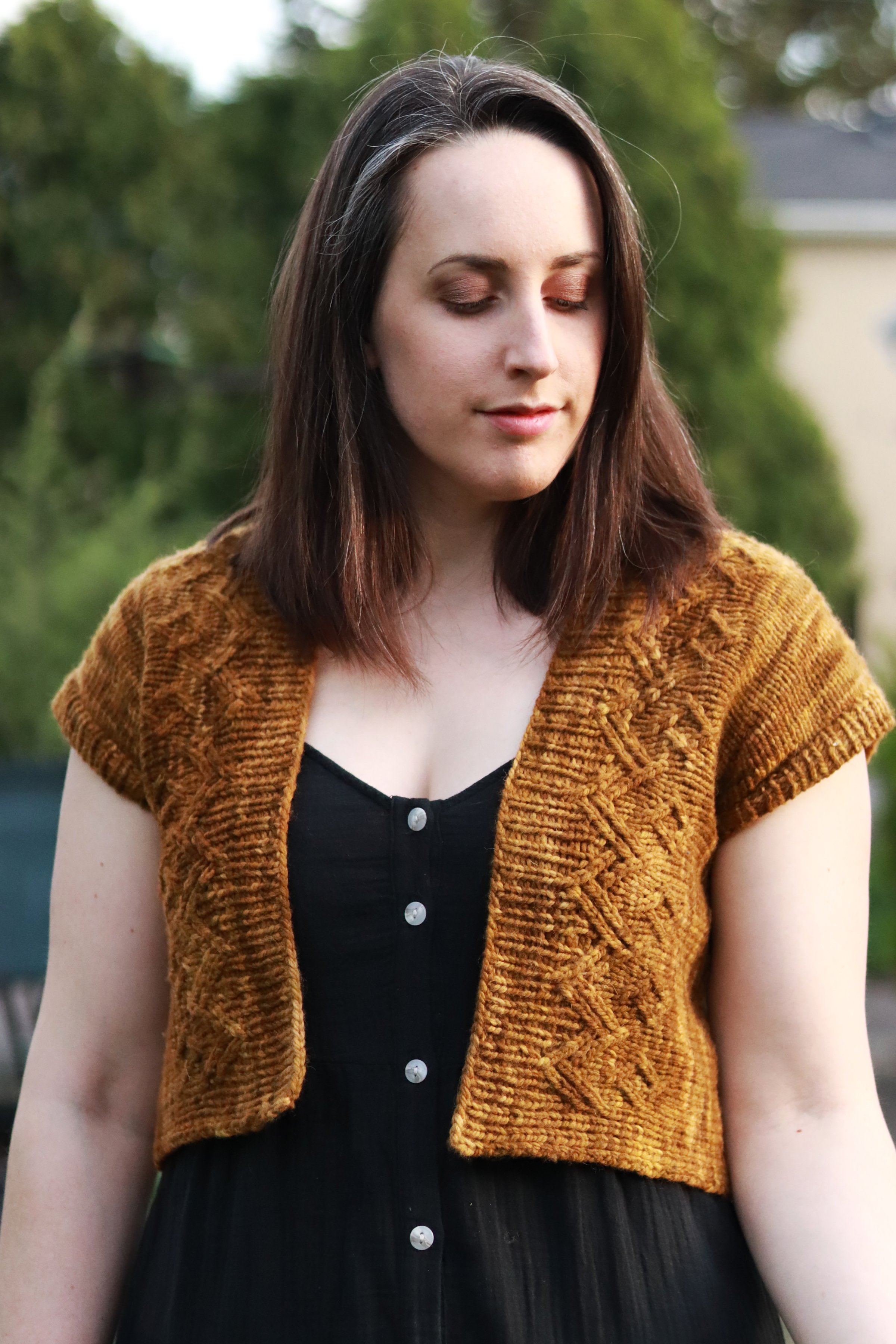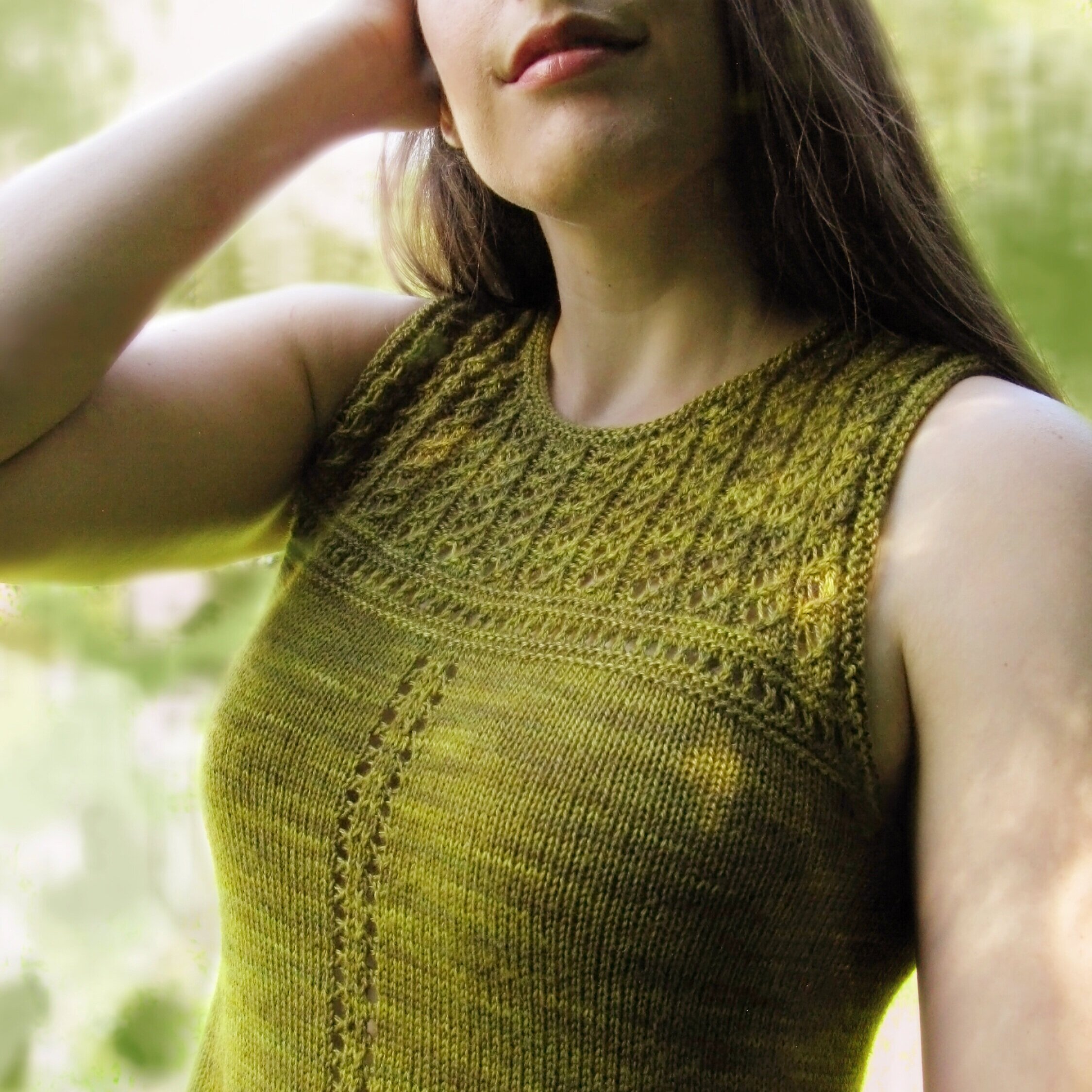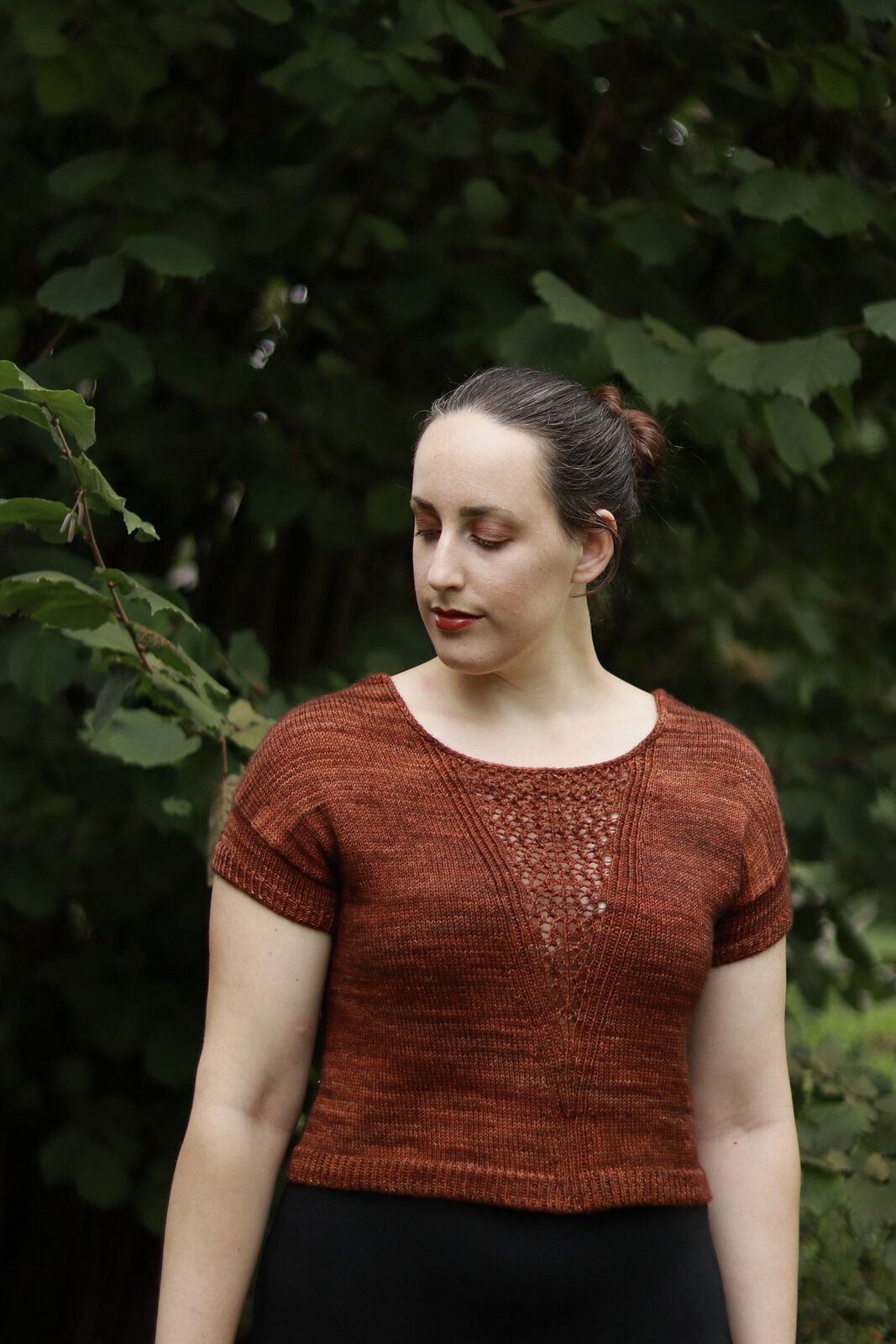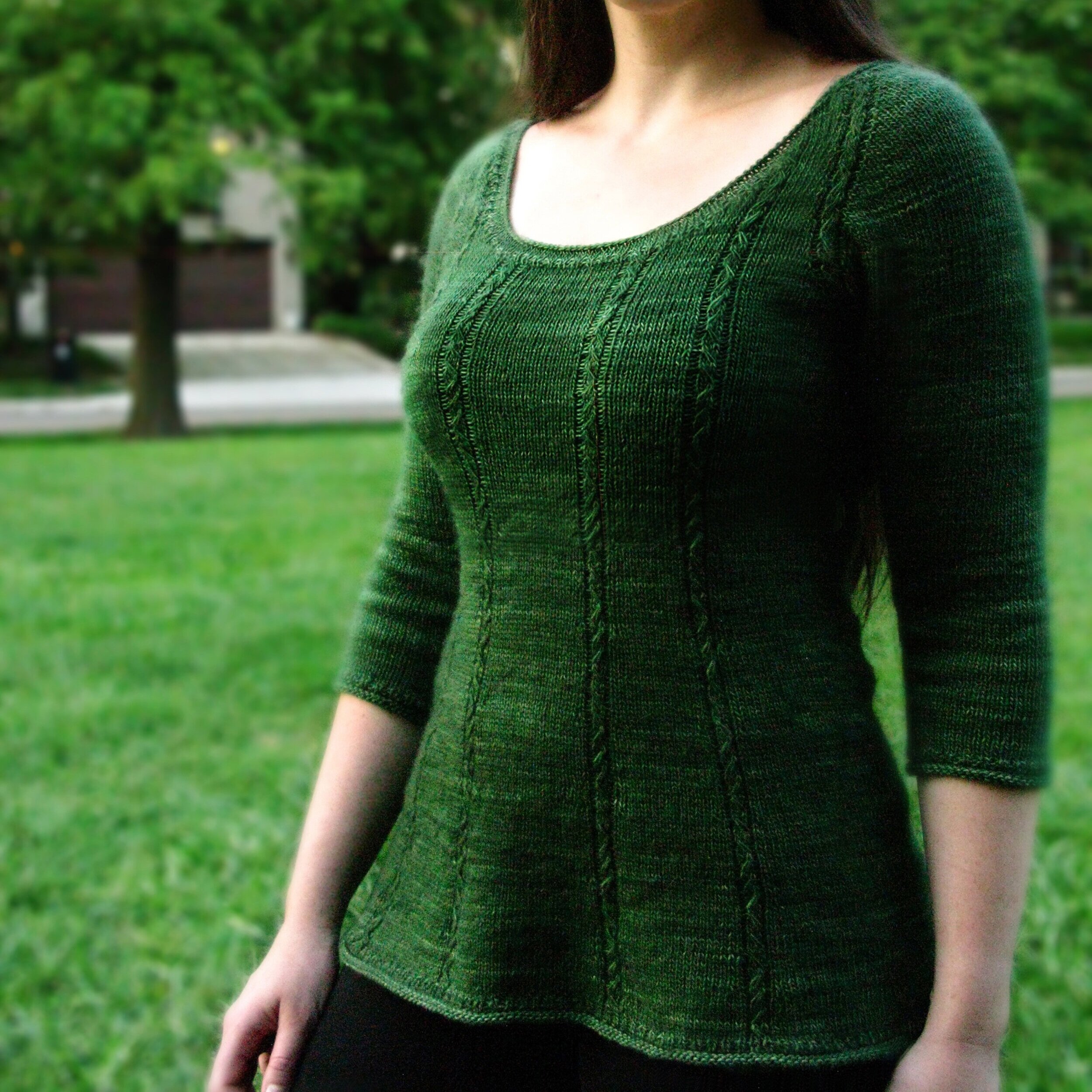The Differences Between Ease, Fit, and Silhouette
Making Sense of Ease - Part 2
There are correlations between ease and fit - typically, garments with less ease (or negative ease) are more fitted, and garments with more positive ease are more relaxed. As we discussed in the last article, ease is all about the numbers: what does the garment measure at a specific point, what does your body measure at the same place, and what is the difference between those two numbers. But when it comes to fit, it’s not as simple as a certain number of inches equals a fitted, or relaxed, or oversized garment. The amount of ease that feels comfortable at one point on your body - say, your bust - may not feel right at another area of your body. To top it off, you may want to wear a specific silhouette that fits differently at different places on your body.
While this series is diving into sweaters, let’s take a moment to think about denim jeans as a framework to understand the differences between ease, fit, and silhouette. First, imagine a pair of rigid cotton jeans vs. a stretchy cotton/lycra denim pair that both measure exactly the same - they are duplicates when laid out on the ground, which means the have the same amount of ease (difference in measurement between garment and body). However, if the stretchy pair fits you nicely and you go to try on the rigid pair with the same measurements, the rigid cotton pair is going to feel incredibly tight and you might not even be able to get them on! Conversely, if the rigid pair fits you nicely and you try on a stretchy pair with the same measurements, that stretchy pair is going to feel too loose and might even fall off. The ease is the same, but the fit is very different - you’d have to change the garment measurements to get things to look and feel similarly on your body. And because of that fabric difference, you may not even want to try go for the same look and feel. You might want to wear entirely different silhouettes: perhaps you’d choose a slim leg or jean legging for the stretchy pair, and a relaxed wide leg style in the rigid pair.
Fit Categories
Fit is the way you want the garment to look and feel in relation to your body. Do you want it to follow the contours of your body (fitted) or float away from you (relaxed or oversized)? Does the garment feel comfortable and accommodate your movement or are there any areas that feel too restrictive, or too loose and un-tailored? Does it stay in place as you wear it or are you tugging and re-adjusting the garment throughout the day back to the original appearance? Fit is somewhat subjective, as what you feel is too loose or too restrictive may differ from another person with your same measurements.
The more garments you make, the more familiar you’ll become with your preferred fits, and the amount of ease you’ll need at different areas on your body to achieve a fit you like. I’m hesitant to give specific ease amounts for different fits, because as we discussed in the jean example, there’s more than just measurements at play. Think about the categories below more in a sense of how they look and feel on your body, rather than in terms of specific ease targets.
Very Fitted - Follows nearly every contour of the body to a T. Most often found in next-to-skin baselayers like tights, leggings, camisoles, and undergarments. The garment usually measures much smaller than the body and is relying on the stretch of the fabric to fit.
Fitted - Overall follows the contours of the body. Often found 1st layer items like tank tops, T shirts, lightweight sweaters. The garment may measure smaller than the body in certain areas.
Classic - Some shaping may be used to tailor the fit to the body, but allows enough space & movement to be worn over other garments. Often a 2nd layer item that you would wear over a camisole, tank, or even a lightweight sweater.
Relaxed - Garment measures larger than the body, making it an easy 2nd layer (or 3rd layer) option over other items. May not have shaping in the body.
Oversized - Garment measures much larger than the body and does not follow the contours of the body at all. This is often a style decision, and can be found in many garment types. If you do plan to layer over an oversized piece, the next layer needs to be able to accommodate the extra fabric from the garment underneath!
Common Silhouettes
There’s one last layer to look at - Silhouette. Where fit is evaluating the look & feel of the closeness or looseness of the garment on the body, silhouette is about the overall garment shape. Some like to describe the silhouette as the “outline” that the garment makes when worn on the body. I always feel like the word outline is an oversimplification - garments are worn on humans who live and breathe and move around in the world, so that outline has to be thought of in a very three dimensional way! Let’s tie silhouette back into ease & fit. Not every garment has the same fit throughout the entire piece - they may have strategically closer-fitting or looser areas, often created by strategic shaping placements (or lack thereof) to create a specific look. That also means that the garment will need to have different amounts of ease in those areas to create the desired effect!
Silhouette descriptions, clockwise from top left
Shaped - Garment utilizes shaping to fit more closely to the contours of the body, often through the waist area. Ease through chest and hip may be similar. Fit through waist may have more ease, as garment does not aim to match the exact contours of the body.
Straight - Garment does not include shaping in the body, measuring the same from the chest through the hip. If wearer’s waist is smaller than the chest/hip, garment will have more ease and feel looser around the waist compared to the chest and hip areas.
A-Line - Garment evenly decreases in width from the hip up to the chest. Typically wearer will have more ease at the hip compared to the chest area to allow the garment to move easily around the lower body.
Tapered - Garment evenly increases in width from the hip up to the chest. Typically wearer will have more ease at the chest compared to the hip to allow ease of movement in the upper body.
Dolman - Garment increases dramatically from the hip or waist up to the chest. Wearer will have large amounts of ease around the chest, with garment armhole extending far past the natural shoulder, creating the dramatic sleeve shape.
Swing - Garment decreases dramatically in width from the hip up to the chest. Wearer will have large amounts of ease around the hip but less ease around the bust, creating a garment that will swing and twirl.
Contoured - Garment shaping is created to mimic the wearer’s own body so the garment closely follows the wearer’s contours. Shaping may differ between front and back body to accommodate the difference in the body’s curvature.
Note - this just touches the surface of body shaping you might encounter in sweater designs! Of course there are the additional layers of overall garment construction, sleeve construction, and sleeve shapes - but this is a good starting point for silhouettes you may come across in knitting patterns and how those silhouettes relate to the body.
In Summary
Ease: The difference between the garment measurement and your body measurement at the same place.
Fit: How the garment looks and feels in relation to your body: following or not following the contours, and tightness vs. looseness.
Silhouette: Strategic ease and fit differences within the garment that create a specific look or “outline” as the garment is worn on the body.
Make sure you don’t miss an article - sign up for my newsletter list below! You’ll also get access to the best release discounts for kerriknits patterns.







